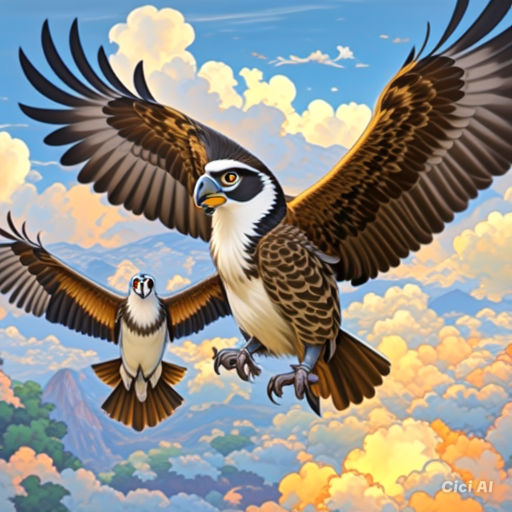By Louis ‘Barok‘ C. Biraogo
In the dense forests of Burauen, Leyte, a flicker of hope took flight as two Philippine eagles soared into the sky. Carlito and Uswag, a six-year-old female and a three-year-old male, were released as part of the Philippine Eagle Reintroduction Program, a beacon of optimism in a world where extinction looms large. Dennis Salvador, the tireless executive director of the Philippine Eagle Foundation (PEF), expressed a cautious optimism. Yet, behind his words lies a tale of relentless struggle, extraordinary dedication, and the fragile dance between survival and extinction.
The Philippine Eagle’s Plight
The Philippine eagle, once a majestic symbol of the archipelago’s rich biodiversity, has been teetering on the brink of extinction for decades. With its impressive wingspan and regal appearance, this apex predator plays a crucial role in the forest ecosystem. However, rampant deforestation, hunting, and habitat destruction have decimated its population. Conservation efforts began in earnest in the late 20th century, with the establishment of the PEF in 1987. Despite the foundation’s efforts, the eagle’s population continued to dwindle, reaching a critical juncture where every released bird signifies a fragile hope.
Assessing Conservation Progress: A Snapshot of Current Efforts
Today, the Philippine Eagle Foundation stands as the last line of defense against the disappearance of this iconic bird. The PEF operates the Philippine Eagle Center in Davao City, where rescued eagles like Carlito and Uswag are rehabilitated and prepared for reintroduction into the wild. The center’s work is a complex interplay of veterinary care, breeding programs, and community education. Despite these efforts, the Philippine eagle remains critically endangered, with an estimated population of fewer than 400 individuals in the wild. The release of Carlito and Uswag is a testament to the incremental yet vital progress made by Salvador and his team.
The Salvador Initiative: A Promise for the Future
Dennis Salvador’s dedication to the Philippine eagle is nothing short of heroic. His vision extends beyond merely saving individual birds; it encompasses the restoration of entire ecosystems. Salvador’s approach is holistic, integrating scientific research with community involvement. His optimism is grounded in a deep understanding of both the challenges and the possibilities. “It would require time to have these raptors in numbers but, it is not impossible,” he asserts. Salvador’s efforts mirror those of conservationists worldwide who have turned the tide for other endangered species.
Global Success Stories: Lessons in Conservation
The fight to save the Philippine eagle is reminiscent of other global success stories. The American bald eagle, once on the brink of extinction, made a remarkable comeback thanks to stringent conservation laws and dedicated efforts by wildlife organizations. Similarly, the reintroduction of the gray wolf to Yellowstone National Park rejuvenated an entire ecosystem. These examples illustrate that with the right combination of legal protection, habitat restoration, and public awareness, species on the edge of extinction can recover.
Challenges Confronting Salvador
Despite the glimmers of hope, Salvador faces formidable challenges. The relentless march of deforestation continues to erode the eagle’s natural habitat. Illegal logging and land conversion for agriculture pose persistent threats. Furthermore, local communities, often driven by economic necessity, may inadvertently harm the eagles or their habitat. Addressing these issues requires a multifaceted approach, combining stringent law enforcement with sustainable development initiatives.
Recommendations Moving Forward
1. Strengthen Legal Protections: The Philippine government must enforce stricter regulations against deforestation and hunting. Legal protections should be bolstered to create safe havens for the eagles.
2. Expand Community Engagement: Local communities must be integral to conservation efforts. Educational programs and economic incentives can align community interests with conservation goals, fostering a sense of stewardship for the eagles and their habitat.
3. Enhance Funding and Resources: Increased financial support from both government and international donors is essential. Adequate funding ensures the sustainability of rehabilitation and reintroduction programs.
4. Collaborate with Global Conservation Networks: Building alliances with international conservation organizations can provide technical expertise, funding, and a broader platform for advocacy.
5. Monitor and Adapt: Continuous monitoring of released eagles and adaptive management strategies will help refine conservation techniques and improve success rates.
Conclusion
As Carlito and Uswag take to the skies, they embody the fragile yet powerful hope that fuels Salvador’s mission. The road ahead is fraught with challenges, but history has shown that with unwavering commitment and strategic action, even the most endangered species can be brought back from the brink. The Philippine eagle’s future hangs in a delicate balance, a suspenseful narrative of survival against overwhelming odds. The question now is whether humanity will rise to the occasion, ensuring that these majestic birds remain a living symbol of our shared natural heritage.

- De Lima Strikes Back: A New Twist in the Duterte Saga

- A New Rift in the Duterte Camp: Bong Go’s Bold Stand Against China

- Sara Duterte’s Political Tightrope: Navigating the Chasm Between Administration and Opposition

- Kris Aquino’s New Love: The Doctor Who Stole the Queen of Media’s Heart

- Waves of Resistance: International Alliance Confronts China’s Maritime Ambitions

- Naming Names: Why Pagcor Must Reveal the Ex-Cabinet Official Behind Illegal POGOs

- Future at Stake: The World Bank’s Urgent Call for Philippine Youth Investment

- Rescheduled Trials and Legal Tactics: What’s Next for Apollo Quiboloy?









Leave a comment